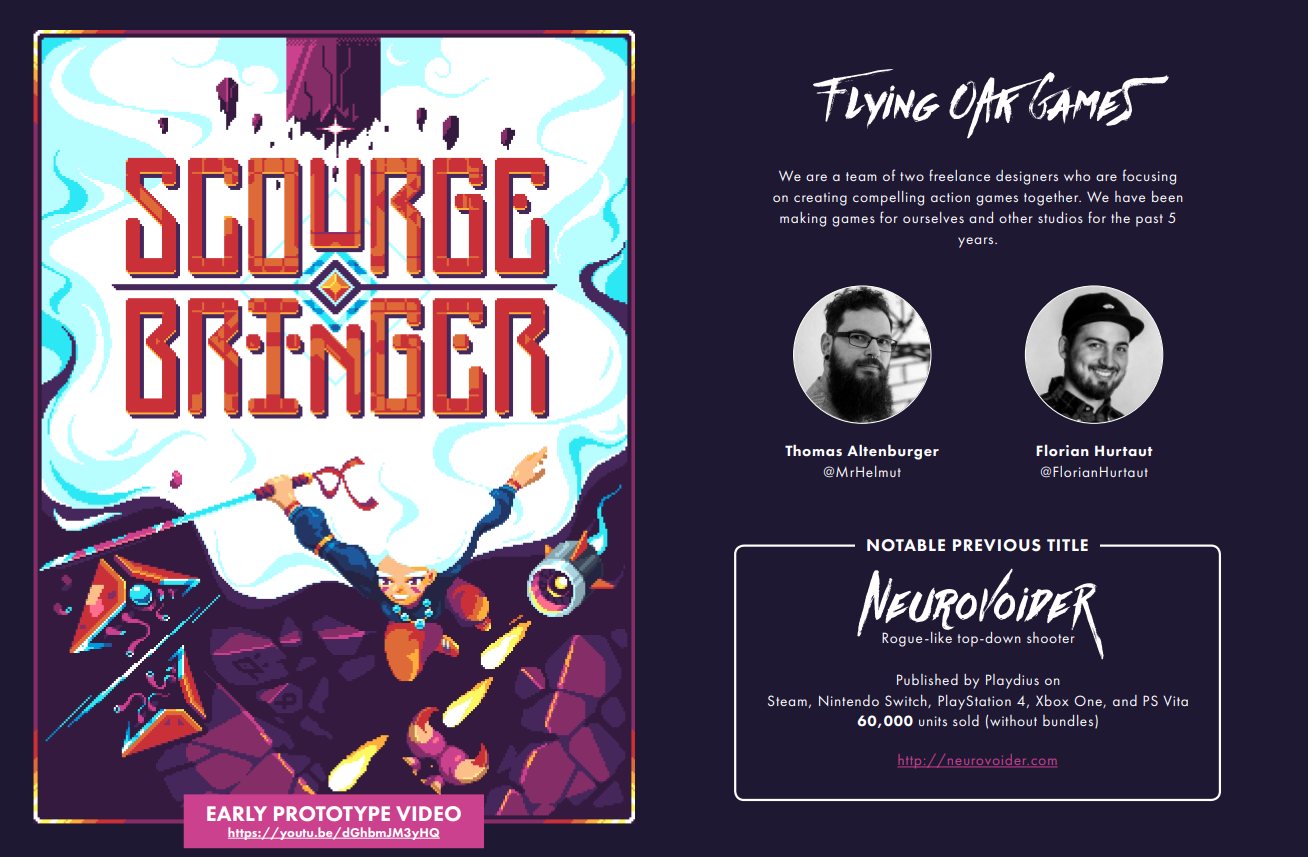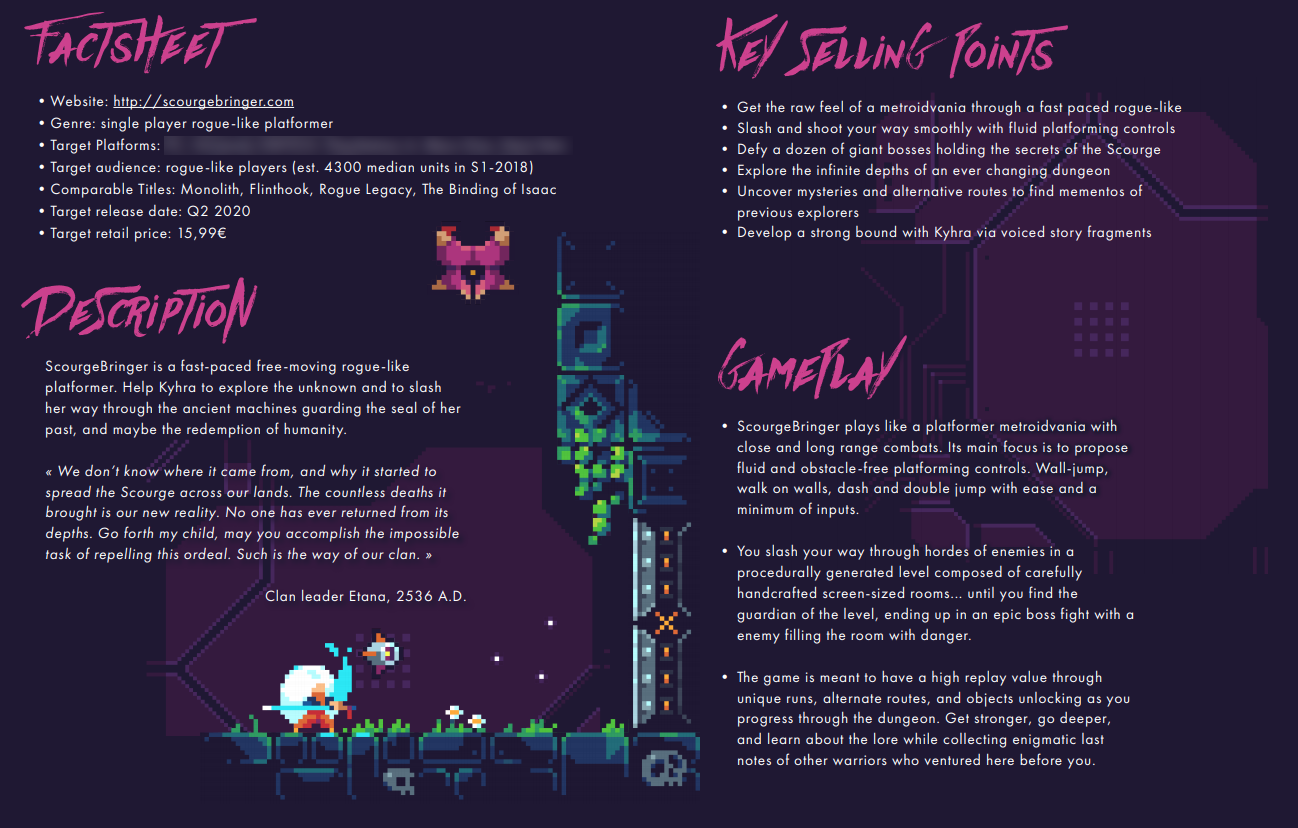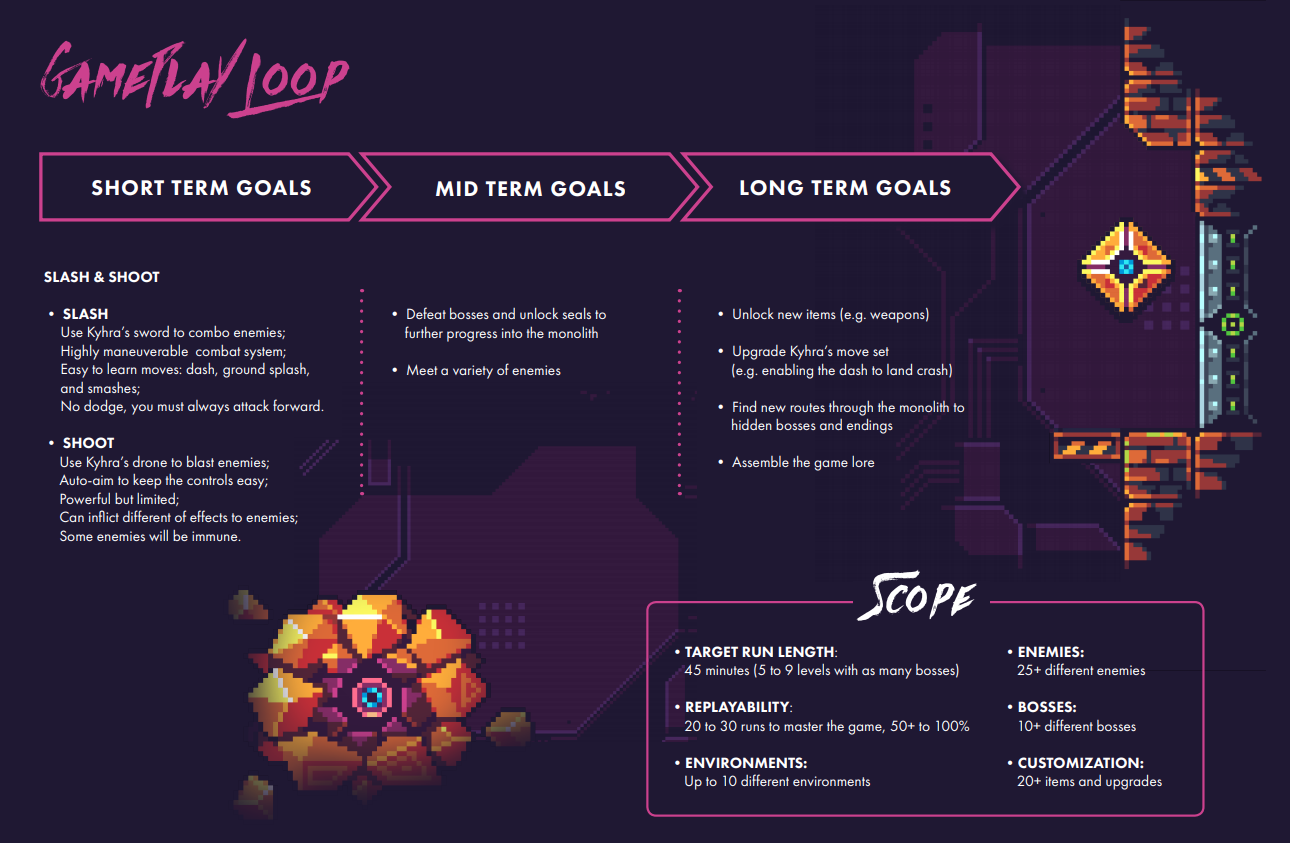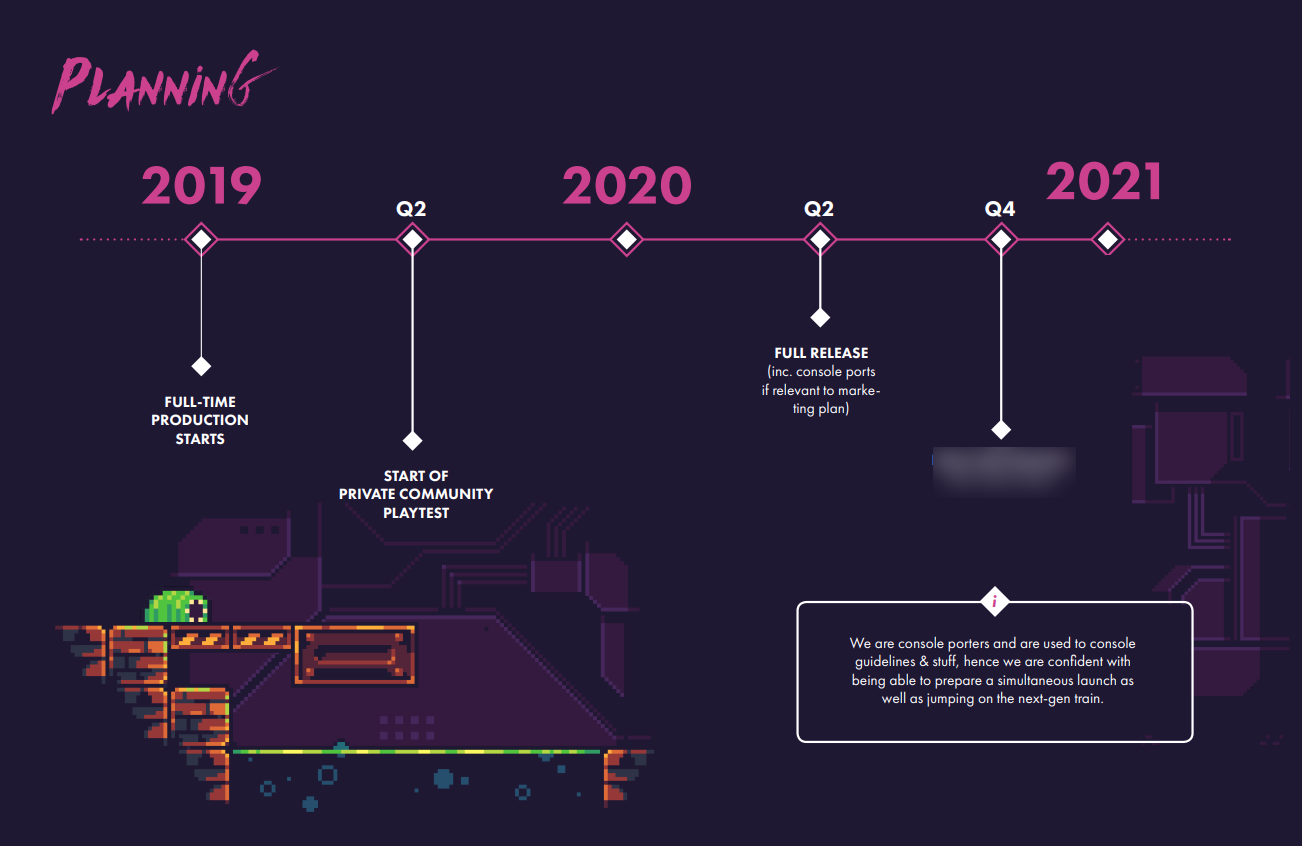Thomas Altenburger, one of the two devs behind the French indie studio Flying Oak Games (best known for NeuroVoider, Dead End, and Hoy), has posted a thread on Twitter discussing strategies for a great pitch.
All the tips presented are based on Flying Oak Games’ experience.
- Study the publisher’s editorial (the kind of games they specialize in). If they specialize in slow-paced, meditative games, while your title is about grotesquely murdering space mutants, maybe save yourself time and effort and look for another publisher.
- Absolutely have a playable prototype, even if it’s glitchy and unpolished (although it’s best to have a clean vertical slice). If it’s not your first project, some publisher might even consider funding your prototype.
- Your pitch deck must not exceed 5 pages, and the text should be kept to a minimum. Always assume publishers don’t have time, so all the relevant information need to be immediately visible.
Altenburger also discusses the structure of the pitch deck supported by the studio’s own examples. These are taken from the pitch deck for Flying Oak Games’ latest title ScourgeBringer, which is available on Steam in early access.
- Quick onboarding. Your pitch needs to give a very clear idea of who you are and what your game is very quickly. It’s a great idea to have a 5 minute presentation video, ideally with subtitles. Also include a link to your prototype.
Image Credit: Flying Oak Games
- Your pitch deck needs a straightforward factsheet. Identify your target release date, the game’s target price, target platforms and target audience. It doesn’t hurt to name comparable titles. Also make sure to briefly describe the story and the gameplay and list the key points setting you apart from all the comparable titles you’ve just mentioned.
Image Credit: Flying Oak Games
- Zoom in on content and gameplay. What core loops does your game have? How many levels? How much time does it take to complete the game?
Image Credit: Flying Oak Games
- If you’ve made this far and the publisher is still interested, now comes the time to discuss your estimates for the production budget and how much of it you need from the publisher. The marketing budget will probably be disussed at a later time provided you’ve reached an initial agreement.
Image Credit: Flying Oak Games
- Finally, you want to give your estimates of the production schedule. These need to be as realistic as possible. If applicable, you also should mention whether you can handle ports in-house.
Image Credit: Flying Oak Games
One additional piece of advice from Altenburger is to “put as much advanced art as possible in it, being screenshots or concepts.”





